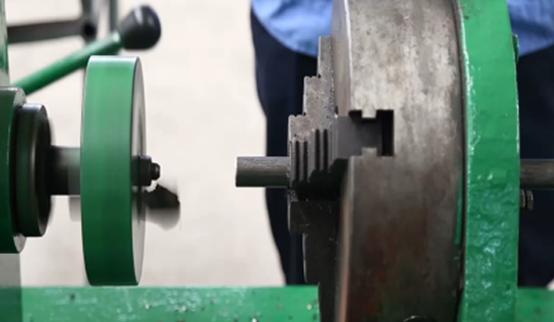 Afrikaans
Afrikaans  Albanian
Albanian  Amharic
Amharic  Arabic
Arabic  Armenian
Armenian  Azerbaijani
Azerbaijani  Basque
Basque  Belarusian
Belarusian  Bengali
Bengali  Bosnian
Bosnian  Bulgarian
Bulgarian  Catalan
Catalan  Cebuano
Cebuano  Corsican
Corsican  Croatian
Croatian  Czech
Czech  Danish
Danish  Dutch
Dutch  English
English  Esperanto
Esperanto  Estonian
Estonian  Finnish
Finnish  French
French  Frisian
Frisian  Galician
Galician  Georgian
Georgian  German
German  Greek
Greek  Gujarati
Gujarati  Haitian Creole
Haitian Creole  hausa
hausa  hawaiian
hawaiian  Hebrew
Hebrew  Hindi
Hindi  Miao
Miao  Hungarian
Hungarian  Icelandic
Icelandic  igbo
igbo  Indonesian
Indonesian  irish
irish  Italian
Italian  Japanese
Japanese  Javanese
Javanese  Kannada
Kannada  kazakh
kazakh  Khmer
Khmer  Rwandese
Rwandese  Korean
Korean  Kurdish
Kurdish  Kyrgyz
Kyrgyz  Lao
Lao  Latin
Latin  Latvian
Latvian  Lithuanian
Lithuanian  Luxembourgish
Luxembourgish  Macedonian
Macedonian  Malgashi
Malgashi  Malay
Malay  Malayalam
Malayalam  Maltese
Maltese  Maori
Maori  Marathi
Marathi  Mongolian
Mongolian  Myanmar
Myanmar  Nepali
Nepali  Norwegian
Norwegian  Norwegian
Norwegian  Occitan
Occitan  Pashto
Pashto  Persian
Persian  Polish
Polish  Portuguese
Portuguese  Punjabi
Punjabi  Romanian
Romanian  Russian
Russian  Samoan
Samoan  Scottish Gaelic
Scottish Gaelic  Serbian
Serbian  Sesotho
Sesotho  Shona
Shona  Sindhi
Sindhi  Sinhala
Sinhala  Slovak
Slovak  Slovenian
Slovenian  Somali
Somali  Spanish
Spanish  Sundanese
Sundanese  Swahili
Swahili  Swedish
Swedish  Tagalog
Tagalog  Tajik
Tajik  Tamil
Tamil  Tatar
Tatar  Telugu
Telugu  Thai
Thai  Turkish
Turkish  Turkmen
Turkmen  Ukrainian
Ukrainian  Urdu
Urdu  Uighur
Uighur  Uzbek
Uzbek  Vietnamese
Vietnamese  Welsh
Welsh  Bantu
Bantu  Yiddish
Yiddish  Yoruba
Yoruba  Zulu
Zulu carry idler
Understanding the Concept of Carry Idler in Modern Manufacturing
In the contemporary landscape of manufacturing, efficiency, precision, and productivity are paramount. As industries increasingly adopt automation and advanced technologies, understanding various components that contribute to operational success becomes crucial. One such component is the carry idler, a mechanical element that plays a vital role in conveyor systems, particularly in bulk material handling. This article delves into the concept of carry idler, its functions, types, and significance in modern manufacturing processes.
What is a Carry Idler?
A carry idler is a supporting roller in a conveyor system that aids in the transport of materials by providing a surface for the conveyor belt to travel over. These idlers are strategically positioned along the conveyor's path to support the belt and the load it carries. By reducing friction and wear on the belt, carry idlers enhance efficiency and longevity of the conveyor system. They are essential for ensuring that materials move smoothly from one point to another, making them indispensable in industries such as mining, agriculture, and logistics.
Functions of Carry Idlers
The primary functions of carry idlers include
1. Support and Alignment Carry idlers help maintain the correct alignment of the conveyor belt, ensuring that it remains on the designated path. This reduces the likelihood of misalignment, which can lead to increased wear and tear.
2. Load Distribution These idlers distribute the weight of the materials being transported, preventing excessive stress on any single point of the conveyor belt. This balance minimizes the risk of belt failure and optimizes operational efficiency.
3. Friction Reduction Carry idlers provide a smoother surface for the conveyor belt to roll over, reducing friction. This decreased resistance allows for increased belt speed and improved energy efficiency, which is crucial for high-volume operations.
4. Reducing Wear and Tear By minimizing direct contact between the belt and the frame of the conveyor, carry idlers significantly reduce wear and tear, which prolongs the lifespan of both the belt and the entire conveyor system.
5. Facilitating Maintenance Carry idlers are designed for ease of maintenance, allowing for quick and efficient adjustments, cleaning, and replacement, which is essential for keeping production lines running smoothly.
carry idler

Types of Carry Idlers
Carry idlers can vary in design based on the specific requirements of the conveyor application. Some common types include
- Standard Carry Idlers These are the most commonly used idlers, typically consisting of a frame and cylindrical rollers. They are used in general applications for transporting bulk materials.
- Heavy-Duty Idlers Designed for extreme loads and harsh environments, heavy-duty idlers are built with robust materials to withstand increased stress and wear.
- Rubber Impact Idlers Used in loading areas where materials hit the conveyor belt, rubber impact idlers provide a cushioning effect that absorbs shock and reduces wear.
- Training Idlers These idlers are specifically designed to assist with belt alignment, helping to correct any misalignment issues that may arise during operation.
The Significance of Carry Idlers in Manufacturing
The integration of carry idlers in conveyor systems is crucial for enhancing productivity in manufacturing. Firstly, they contribute to the overall efficiency of material handling processes. With reduced friction and improved load distribution, manufacturers can transport materials more quickly and with less energy expenditure, ultimately leading to cost savings.
Moreover, the reliability and longevity of conveyor systems directly impact a company's bottom line. Fewer breakdowns and maintenance requirements translate to less downtime, which is vital for maintaining continuity in production. As industries strive for just-in-time manufacturing and lean principles, the role of carry idlers in ensuring smooth and uninterrupted material flow cannot be overstated.
In conclusion, carry idlers are a fundamental component of modern conveyor systems in the manufacturing sector. Their ability to support, align, and reduce friction leads to enhanced operational efficiency, longevity of equipment, and significant cost savings. As industrial demands continue to evolve, understanding and optimizing the use of carry idlers will remain essential for manufacturers seeking to enhance productivity and maintain a competitive edge.
-
Revolutionizing Conveyor Reliability with Advanced Rubber Lagging PulleysNewsJul.22,2025
-
Powering Precision and Durability with Expert Manufacturers of Conveyor ComponentsNewsJul.22,2025
-
Optimizing Conveyor Systems with Advanced Conveyor AccessoriesNewsJul.22,2025
-
Maximize Conveyor Efficiency with Quality Conveyor Idler PulleysNewsJul.22,2025
-
Future-Proof Your Conveyor System with High-Performance Polyurethane RollerNewsJul.22,2025
-
Driving Efficiency Forward with Quality Idlers and RollersNewsJul.22,2025





























